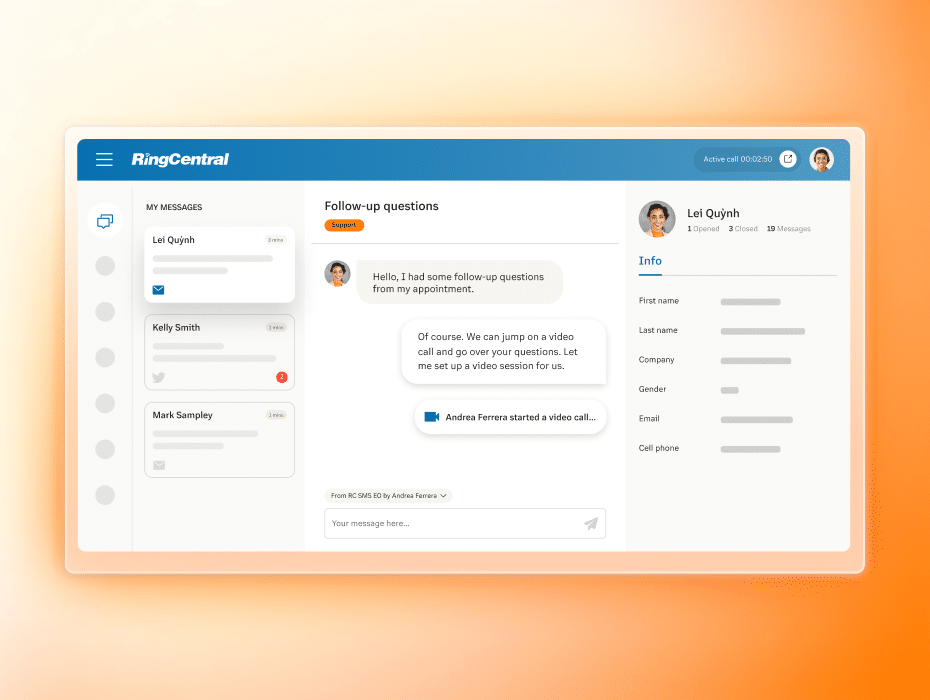Lead qualification is one of the most difficult and laborious aspects of sales. It’s incredibly useful to qualify leads, because it allows you to prioritize the prospects that are most likely to convert, and most likely to have a high Customer Lifetime Value. But how can you establish which prospects, exactly, are high quality leads and which aren’t?
A talented salesperson with a strong understanding of people will be able to get a “feel” for which leads are high quality and which aren’t, but that feel is much, much more accurate if it’s backed up with data. What’s more, a quick and efficient system for qualifying leads saves your salespeople a lot of time and effort.
This is where BANT comes in. BANT is a strong, conversation-based system for quickly and easily qualifying leads. It allows your salespeople to back up their gut feelings about leads with solid data, and helps your sales teams to quickly move forward with high-quality, priority leads.
The result is a much faster, more efficient, and more successful sales cycle.
Sound good? Let’s take a closer look:
What are BANT sales?

BANT is an acronymic framework that helps sales reps to quickly qualify leads early on in the sales process. When using BANT successfully, sales teams can save a lot of time that might otherwise be spent trying to persuade bad leads. What’s more, BANT gives sales reps a lot of useful information that can help them guide the conversation effectively and speed up the prospect’s decision-making process.
That’s the basics of what BANT aims to do. So, what does BANT stand for, and how does it work?
BANT stands for Budget, Authority, Need, and Timeframe. Let’s break that down:
- BUDGET. This refers to the amount of money the prospect has available to them. Can they afford your offering? How much are they willing to spend? Would your offering represent good value for money for them?
- AUTHORITY. Does the person you’re talking to have the authority to make a purchase decision? For example, if you’re calling B2B, have you got through to someone with decision-making authority, or should you ask to be put through to someone who can authorize purchases?
- NEED. Does your offering fulfill a need for your prospect? Will your offering solve a problem your prospect has, or bring improvements to their life/business. If so, what is this need and how, exactly, will your offering help?
- TIMEFRAME. When can/will your prospect purchase your offering? Is there a sense of urgency, or are they likely to take their time before converting?
How does BANT help sales?

BANT is a tried and tested sales framework that speeds up the qualification process without putting too much pressure on the prospect. It’s a streamlined and efficient sales qualification framework that ‘s become a staple of many successful businesses’ sales methodology.
BANT helps your sales teams in several ways:
- It quickly confirms and/or qualifies the leads brought in by your sales prospecting tools, allowing you to swiftly move forward with sales.
- It saves time and resources by stopping your sales reps from wasting time on prospects that are unlikely to convert.
- It makes the sales process a lot more streamlined and efficient.
- It helps your customers to make better-informed purchasing decisions.
- It brings better, higher-quality leads into your sales cycle.
- It helps sales teams to refine their sales pitches to the precise needs and situations of individual prospects.
How to use BANT to qualify leads and persuade potential customers to convert
So, that’s what BANT is and how it boosts business. But how can you use this sales qualification methodology effectively?
Let’s take a look at some best BANT practices that will help you to quickly qualify leads and persuade your best leads to convert.
Use the right technology

The digital tools you use can have a huge impact on the success (or otherwise) of your BANT strategy. Even the very best sales professionals can benefit from good sales and communications tech.
At the very least, a good sales team should have the following tech at their fingertips:
- A unified CRM. A centralized Customer Relationship Management platform that integrates with things like your communications platform, your sales platforms, your martech etc is essential for good BANT sales. CRM data will give your sales reps detailed information about prospects at a glance, and contribute to a much deeper understanding overall of your customer base.
- Conversational AI. AI tools in your communications center can be a huge help for your sales reps. Conversational AI, like RingSense for Sales, can flag important keywords when they come up, offer intelligent BANT prompts whenever needed or even bring in sales managers when the tone of voice takes a turn for the worse.
- Access to other teams and their data. For example, marketing teams often have a wealth of data on customer personas, needs, motivations, and so on that can be incredibly useful for sales professionals. Similarly, it’s very useful for sales teams to have quick access to R&D experts who can answer operational questions for curious customers. So, make sure that your teams and their tools integrate as seamlessly as possible.
- A fully integrated communications center. Your communications center should allow your sales representatives to easily engage with potential clients over a wide range of channels and formats, including voice call, video call, and SMS. It should (as mentioned above) integrate seamlessly with your CRM and other relevant tools and platforms, and it should offer a wealth of features (such as conversational AI) to support, empower, and enable your sales teams.
Put together a set of great BANT questions
At the core of the BANT sales approach is asking clever sales qualification questions to gain a better understanding of the prospect’s position. So, it’s important to carefully arm your sales reps with a list of BANT question examples.
You will find plenty of BANT question examples all over the internet (we’ve even included some below). But remember, while there’s nothing wrong with generic questions to give you a jumping-off point, your BANT questions should take the specific situations, wants and needs of your target sales leads.
For example, if you’re making B2C sales calls, generic questions about budget allocation and departmental decision makers won’t be relevant at all. Instead, ask questions more appropriate for a domestic setting, such as “Will this be a personal purchase or a family purchase?” and “How can our product help in your household?”
For B2B sales processes, you must adjust your BANT questions to take things like the budget approval process, current business priorities, and so on.
Keep your framework flexible
This might sound like we’re directly contradicting our last piece of advice, but trust us here. You can provide your sales reps a framework of questions and give them flexibility within that framework.
Modern customers are quick to spot a set spiel, and they don’t appreciate it when they do. If it sounds like your sales reps are reciting a script at them, they will quickly go cold. So, while you should provide your sales reps with sample questions and encourage them to move the prospect through the BANT framework, you should also give them the authority to move with the flow of the conversation rather than trying to force the conversation into a particular pattern.
For example, you might encourage your sales reps to practice active listening, which will help them to pick up and act on conversational cues in order to create a positive dialogue. This is especially the case if you’re talking to people in far-flung locations via VoIP phone. Active listening will help your reps to adjust to local modes of speech, and alter their approach according to the time in the timezone they’re calling.
Similarly, you should allow your reps to go off script when it might benefit the prospect or the sale (preferably both!). For example, a prospect might mention that they’re having a busy day. Your agent could use this to chop up the BANT framework a bit and put Need first, mentioning how your product could make days like this easier.
Use a good sales qualification framework like BANT to quickly and efficiently qualify your leads
A good lead qualification system can save your business and your sales teams a huge amount of time, money, and effort. It will help you to prioritize the best leads, give you a deeper understanding of your customers from the get-go, and help you to build positive relationships with customers even while you’re making your sales pitch.
Understanding BANT and how it works will help you to design your own sales process that’s quick and effective for your particular business needs. The right BANT questions combined with a truly efficient and empowering communications suite like RingCentral will speed up your lead qualification process and lead to much quicker conversions.
Explore our website and sign up to our free trial to find out more about how RingCentral’s business phone service can benefit your company.
FAQs
How can I assess a prospect’s budget?
You can assess a prospect’s budget by asking direct questions about their financial constraints and the allocation of funds for solving the problem your product addresses. Understanding their spending limits and financial priorities is crucial.
What questions should I ask to determine a prospect’s authority?
To determine a prospect’s authority, ask about their role in the decision-making process. Questions like “Who else is involved in the purchasing decision?” and “What is the approval process for this type of purchase?” can provide insights into their level of authority.
How do I identify a prospect’s need?
Identify a prospect’s need by asking open-ended questions about their current challenges, goals, and the impact of those challenges on their business. Understanding their pain points and desired outcomes will help you tailor your solution to meet their needs.
Why is it so important to understand a prospect’s timeline?
Understanding a prospect’s timeline helps you gauge their urgency and plan your follow-up accordingly. Questions like “When are you looking to implement a solution?” and “Are there any upcoming deadlines or events that influence your timeline?” can clarify their timeframe.
Originally published Aug 18, 2024





